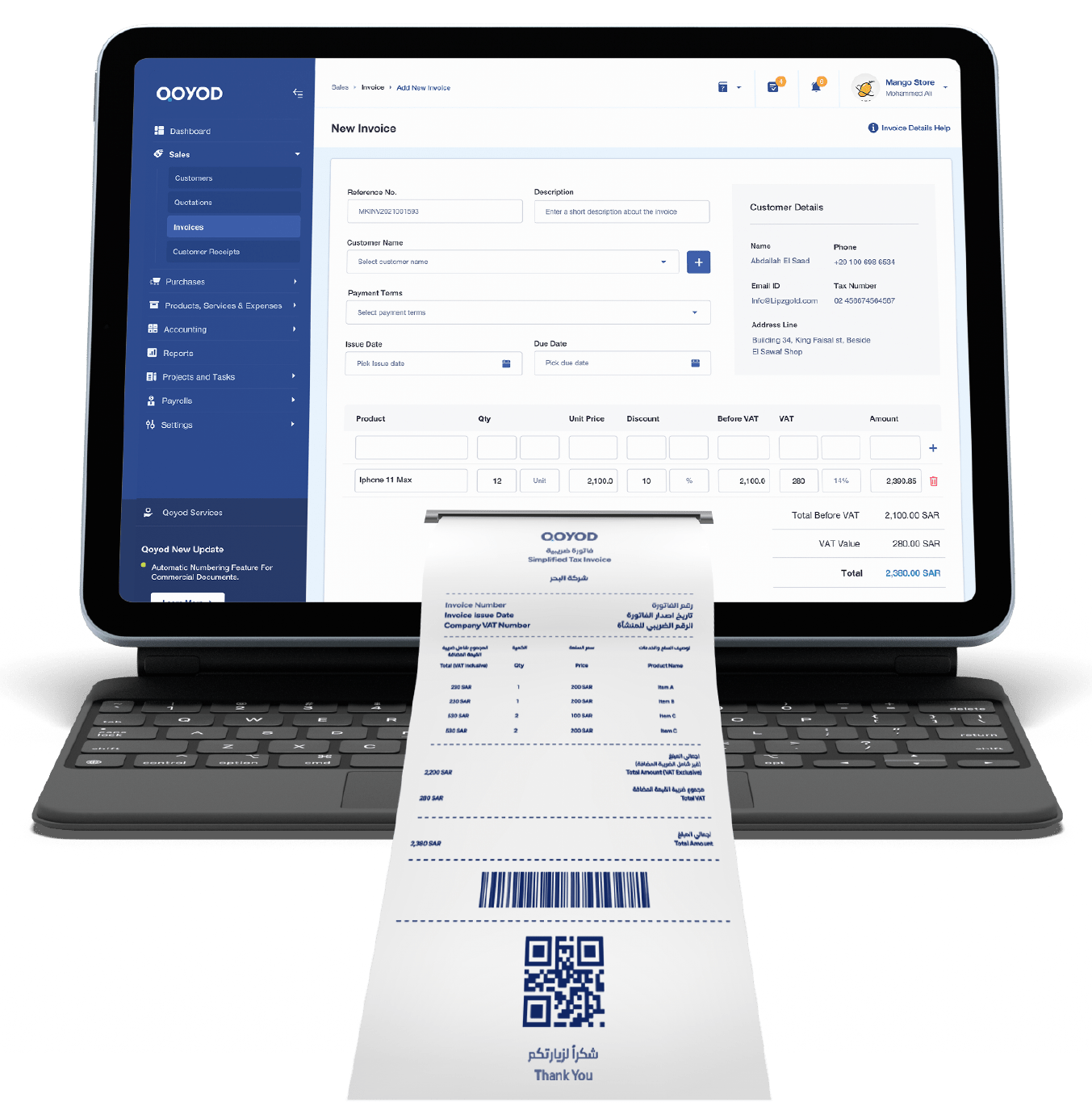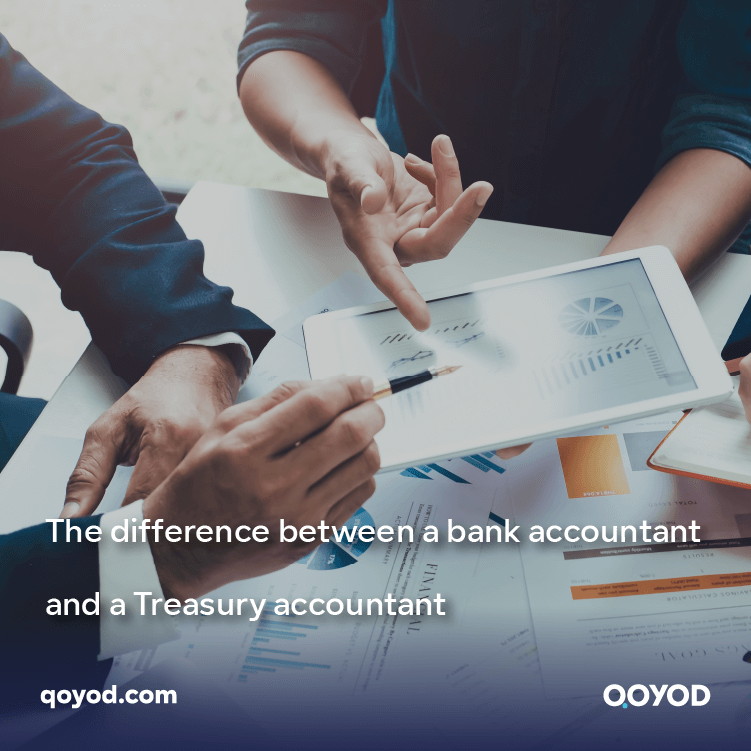Both a bank accountant and a treasury accountant integrate their tasks by monitoring cash flows entering and leaving the facility and accurately describing each accounting item. As we will learn in the next few lines, the treasury accountant handles liquid cash flows deposited or disbursed from the fund. In contrast, the bank accountant monitors outstanding checks and bills and prepares the special settlement memorandum between the company and the bank.
Treasury accountant: tasks, responsibilities and the documentary cycle used
The most important responsibilities of a treasury accountant are to follow up on all credit and debit movements in the treasury and record their entries. In addition, he performs some other tasks, including:
- The accountant records credit and debit transactions if they are invoices for selling products, collecting cash from customers, or any other revenues in the credit transactions, and records any expenses or costs on the debit side.
- The accountant formulates the accounting equation, which starts with the balance at the start of the period, adds all revenues and cash inflows, and subtracts all expenses. This process ultimately yields the establishment’s current balance, reflecting its real-time financial status.
- The treasury accountant must obtain the financial director’s approval to disburse any facility-related expenses. A document supporting that transaction must be created and kept in the facility’s records until requested when preparing the facility’s balance sheet.
- Issuing cash receipt vouchers. The facility issues cash receipt vouchers for all amounts received, serving as a document that validates the credit transaction and boosts the treasury balance. They must be reviewed during the day, as must the actual inventory carried out within the treasury.
- Receiving checks and bills of exchange from customers and following up on their due dates. One of the tasks of a treasury accountant’s work is that his work is not limited to monitoring cash flows only; However, he receives commercial papers and keeps them, and here the work of a treasury accountant and a bank accountant is integrated in that the bank accountant follows up on the establishment’s bank account statement and follows up on withdrawal and deposit accounts.
Accounting entries used by the treasury accountant
The entries in the Treasury section are divided into simple and complex entries. Simple entries consist of a credit and a debit side, while a complex entry can contain more than one credit or debit account and express whether it is a debit to two mentioned people or a credit to two mentioned people. In the following lines, we will present the most important entries on the receivables side and the most important restrictions on the payments side.
First: entries for receivables
Liquid cash from customers, checks, and commercial bills, which are also due to the establishment, serve as receipts. Therefore, the accounting entry will take the following form:
| From/the treasury To mentioned /Customer (customer name) /Checks and bills of exchange “Daily collection from customers or the value of checks and bills of exchange” |
In this entry, the treasury was debited for the amounts paid by customers and collected in cash from checks and promissory notes owed to the establishment.
Second: entries for payments
Payments are represented in operational expenses, general expenses, and also suppliers’ accounts if the payment is in cash or checks due to the facility, and when recording the payments, it is as follows:
| From mentioned / General expenses (name of expense) /Suppliers (supplier name) To/the treasury “Proof of payment of general expenses and payment of suppliers’ accounts” |
In this entry, the treasury has been made a creditor of the total amounts received by either suppliers or if any general expenses related to the facility were paid.
A practical example of a Treasury inventory report
Preparing the treasury inventory report daily is one of the most important tasks of a treasury accountant. The inventory report format is shown in the following figure:
First: cash inventory
| Category | the number | Total | Notes |
| 500 | 100 | 50000 | |
| 200 | 9 | 1800 | |
| 100 | 5 | 500 | |
| 50 | 100 | 5000 | |
| 20 | 4 | 80 | |
| 10 | 8 | 80 | |
| 5 | 7 | 35 | |
| 1 | 5 | 5 |
Total balances in Saudi riyals: 57,495 only, fifty-seven thousand Saudi riyals, and four hundred and ninety-five Saudi riyals only.
The latest treasury documents were:
| number | date | amount | |
| The last bill of exchange in the name of / Muhammad Ahmed Ali. | 765320 | 2/7/2014 | 5000 |
| The last receipt is in the name of Ibrahim Ahmed Mohsen. | 6024912 | 2/8/2024 | 9000 |
Second: Inventory of checks and commercial papers
| check number | due date | The drawee bank | Name of drawer | The name of the drawee | the amount |
| 682614 | 6/15/2024 | Riyad Bank | Muhammad Ahmed Ali | Saeed Kamel Muhammad | 12000 |
Bank accountant: tasks, responsibilities and the documentary cycle used
- The bank accountant is responsible for monitoring the real-time balances within the bank, implementing the monetary policies of the company’s management, and studying whether the company wants to increase its capital through long-term loans.
- The accountant’s role is not limited to studying long-term loans from the bank only but also studies all offers submitted by other financing companies and chooses the best offers that suit the company.
- Facilitating the work of external auditors to access the nature of the company’s accounts within the bank while preparing disclosure reports on those balances in the financial period that the auditors wish to examine.
- Collecting, sorting, and tabulating all credit and debit transactions within the bank and presenting them on an ongoing basis to the financial manager.
- Periodic communication on behalf of the facility with all financial institutions, including insurance companies and banks, and resolving all issues related to this subject, including account statements, opening new accounts for employees to receive their salaries, and any problems related to that point.
Programs and documents used by bank accountants
One of the key distinctions between a treasury accountant and a bank accountant is the documentation cycle each employs when the bank accountant prepares the bank settlement memorandum. The most crucial details of this cycle are as follows:
- Periodic review of commercial papers, and the bank’s accountant has a copy of all checks and promissory notes.
- Comparison between data received from the bank and data within the facility, such as deposits and withdrawals. The balances with the bank must match the facility’s payments.
- If there are differences between the bank account and the bank account located within the facility, they must be accurately determined. The nature of those differences must be determined, and the bank must be referred to find a solution to those differences.
- Directly reaching all settlements and resolving all discrepancies so that the company’s balance sheet is prepared correctly.
- Final review and preparation of the bank reconciliation statement.
A reconciliation settlement can take the following form:
Bank reconciliation statement
Name of the bank …………. for the month ………
Account number……… Date…………..
| Statement | the amount | Notes |
| Bank account balance from accounting records | 0.00 | |
| Total deposits | 0.00 | |
| Total withdrawals | 0.00 | |
| Bank expenses | 0.00 | |
| Uncashed checks | 0.00 | |
| Deposits appear in accounting records. | 0.00 | |
| Deposits appear on the bank statement. | 0.00 | |
| Withdrawals appear on the bank statement. | 0.00 |
Bank reconciliation statement elements
- Opening balance: This is the balance at the beginning of the period and must be identical between the establishment’s records and books and the bank statement.
- Deposits: These are the amounts deposited within the bank, and according to the bank statement, the copy of the deposit in the facility must match the number deposited in the account.
- Withdrawals: These are the amounts withdrawn by check in the name of the bank accountant and must match the numbers in the bank statement as well.
- Bank fees: These are the annual fees that are deducted from the opened bank account.
- Credit and debit transfers: These are transfers between accounts from customers and suppliers to the company’s accounts. These transactions must be audited to ensure that they were completed correctly, and the actual balances of customers and suppliers must be matched with the amounts transferred to them for suppliers and transferred from them for customers.
Steps to set up a bank reconciliation statement
Both the treasury accountant and the bank accountant review the checks issued and the checks received for the establishment’s account, as well as the cash flows and copies of deposits, as well as the exchange vouchers and withdrawals from the bank. Then the following steps begin:
- Obtain a bank statement for the period for which you wish to make the settlement memorandum.
- Matching the opening balance and checking deposits and withdrawals.
- Ensure the correct addition of credit returns.
- Review bank fees.
- Verifying the final balance and addressing the differences in accounting in partnership with the bank.
- Documenting the results and writing disclosure reports to present to management.
Conclusion
The way a treasury accountant and a bank accountant work differ in the daily procedures that each of them follows, and they are integrated when preparing some important accounting reports, such as the bank reconciliation statement, which is the core of the bank accountant’s work. As for the treasury accountant, he records all credit and debit transactions that have a decrease or increase effect on the treasury. Their work also complements the treasury accountant’s retention of checks issued and received, whether from suppliers or customers, in order to control those balances with the bank and provide the correct financial information and reports to the owners of capital within the facility.

Join our inspiring community! Subscribe to our LinkedIn page and Twitter to be the first to know about the latest articles and updates. An opportunity for learning and development in the world of accounting and finance. Don’t miss out, join us today!




